Windows Support System
Posted: March 21, 2011
Threat Metric
The following fields listed on the Threat Meter containing a specific value, are explained in detail below:
Threat Level: The threat level scale goes from 1 to 10 where 10 is the highest level of severity and 1 is the lowest level of severity. Each specific level is relative to the threat's consistent assessed behaviors collected from SpyHunter's risk assessment model.
Detection Count: The collective number of confirmed and suspected cases of a particular malware threat. The detection count is calculated from infected PCs retrieved from diagnostic and scan log reports generated by SpyHunter.
Volume Count: Similar to the detection count, the Volume Count is specifically based on the number of confirmed and suspected threats infecting systems on a daily basis. High volume counts usually represent a popular threat but may or may not have infected a large number of systems. High detection count threats could lay dormant and have a low volume count. Criteria for Volume Count is relative to a daily detection count.
Trend Path: The Trend Path, utilizing an up arrow, down arrow or equal symbol, represents the level of recent movement of a particular threat. Up arrows represent an increase, down arrows represent a decline and the equal symbol represent no change to a threat's recent movement.
% Impact (Last 7 Days): This demonstrates a 7-day period change in the frequency of a malware threat infecting PCs. The percentage impact correlates directly to the current Trend Path to determine a rise or decline in the percentage.
| Threat Level: | 10/10 |
|---|---|
| Infected PCs: | 7 |
| First Seen: | March 22, 2011 |
|---|---|
| Last Seen: | January 8, 2020 |
| OS(es) Affected: | Windows |
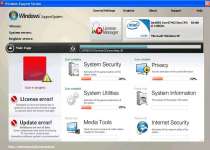 Windows Support System is a clone of other known rogue security software and will threaten your PC with heavy-handed infection warnings even if the only problem on your system is Windows Support System! The main infection vector for Windows Support System is by way of a Trojan that pretends to be a Trojan alert from Microsoft while asking you to download unidentified software. Rogue security programs like Windows Support System are known to shut down programs and alter web browser behavior, in addition to their milder functions; you should try to delete Windows Support System and any related malware if you want your PC to remain safe.
Windows Support System is a clone of other known rogue security software and will threaten your PC with heavy-handed infection warnings even if the only problem on your system is Windows Support System! The main infection vector for Windows Support System is by way of a Trojan that pretends to be a Trojan alert from Microsoft while asking you to download unidentified software. Rogue security programs like Windows Support System are known to shut down programs and alter web browser behavior, in addition to their milder functions; you should try to delete Windows Support System and any related malware if you want your PC to remain safe.
Seeing Windows Support System Before It Gets In
Most people are infected by Windows Support System only after getting a related Trojan that specializes in the delivery of rogue security applications. This Trojan, Fake Microsoft Security Essentials Alert Malware, will usually open up with a message like this one:
Microsoft Security Essentials Alert
Microsoft Security Essentials detected potential threats that might compromise your privacy or damage your computer. Your access to these items may be suspender until you take an action.
The Trojan may block any or all other applications, and will also tell you that you have a Trojan.Horse.Win32.PAV.64.a Trojan infection. Don't do what the infection tells you to do and download the suggested software - you'll only get infected by Windows Support System or another fraudulent rogue security product.
Windows Support System Hasn't a Jot of Support to Offer (Except to Criminals!)
Windows Support System will show a number of traditional malware behaviors when Windows Support System is installed:
- Windows Support System will 'grade' your system according to Security, Privacy, License Management and other divisions. Don't worry over trying to get a good score on Windows Support System's little system - this rogue security program is designed to give all computers failing grades.
- Faulty system alerts about infections and other problems with your PC will appear often. Windows Support System use this alongside equally worthless scanning reports to trick you into thinking your machine is on the edge of total collapse.
- Your Registry will be changed to let Windows Support System run whenever Windows Support System wants - which is every single time you boot your PC! In most circumstances, using a Safe Mode boot can sidestep this trick.
- Like the Trojan that delivered it, Windows Support System may also prevent programs from running. Don't believe those infected program warnings, especially if they pertain to a critical application like Task Manager.
- Windows Support System may also hijack your web browser, controlling where you go and what you see. This can even extend to putting up fake unsafe website errors to block off useful websites.
Although Windows Support System is a non-negligible threat to your computer, it's still possible to remove Windows Support System without too much difficulty, provided you're prepared for it. Since Windows Support System is a simple copy of other rogue security programs like Windows System Optimizator, Privacy Corrector and PrivacyGuard 2010, the industry has developed the necessary tools to delete Windows Support System without a trace being left behind. Just be sure you catch the Trojan that probably delivered Windows Support System in the process!
Technical Details
File System Modifications
Tutorials: If you wish to learn how to remove malware components manually, you can read the tutorials on how to find malware, kill unwanted processes, remove malicious DLLs and delete other harmful files. Always be sure to back up your PC before making any changes.
The following files were created in the system:%AppData%\Microsoft\emqyyf.exe
File name: emqyyf.exeSize: 2.33 MB (2330112 bytes)
MD5: 05d638d2e322ee22ce58f7ed980193fd
Detection count: 93
File type: Executable File
Mime Type: unknown/exe
Path: %AppData%\Microsoft
Group: Malware file
Last Updated: January 8, 2020
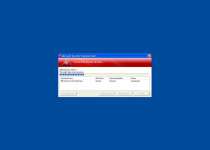
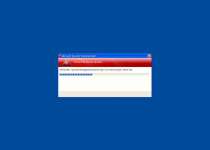
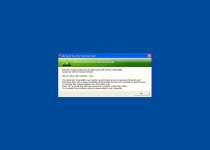
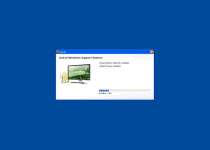
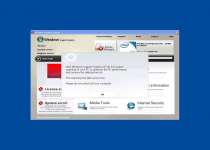

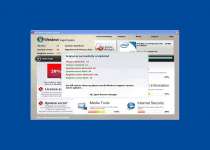



Leave a Reply
Please note that we are not able to assist with billing and support issues regarding SpyHunter or other products. If you're having issues with SpyHunter, please get in touch with SpyHunter customer support through your SpyHunter . If you have SpyHunter billing questions, we recommend you check the Billing FAQ. For general suggestions or feedback, contact us.